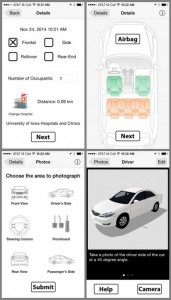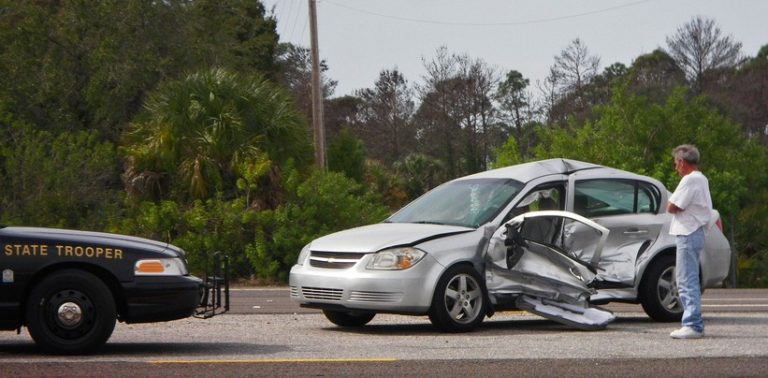Researchers in Iowa are using smartphone technology to let trauma teams inspect vehicle damage before crash victims arrive at the hospital. The TraumaHawk app allows state troopers to send crash site photos to trauma center personnel. Clinicians say the photos help them provide more focused care in the trauma bay.
TraumaHawk is being tested at University of Iowa Hospitals & Clinics, a Level I trauma center in Iowa City. It was built by a team at the University of Iowa, and it is based on automotive traumatology principles developed by Robert Kaufman of the University of Washington. Preliminary studies began in October 2013, and TraumaHawk is currently in use by 35 members of the Iowa State Patrol.
How it works
After a crash scene is safe, a trooper opens the TraumaHawk app on a dedicated iPhone. The app prompts the trooper to enter basic information about the crash, such as crash type, the number and location of occupants, and airbag deployment, according to an Iowa Now report.
TraumaHawk then guides the trooper through photographing the vehicle. Illustrations demonstrate the position and angle from which to capture photos. The user has the ability to make simple photo edits and redact faces for privacy.

The app transmits all photos and crash information to a dedicated iPad at the trauma center, according to Iowa Now. Trauma personnel access the photos and information via a secure server.
Better injury care
Trauma professionals can use the photos to predict patient injuries, according to Daniel V. McGehee, PhD, director of the Human Factors and Vehicle Safety Research Division at the University of Iowa Public Policy Center.
“Based upon how a vehicle is crumpled, we can begin to predict what the injuries might be to the crash victims,” said McGehee, according to a press release. “For example, for a car sustaining a severe low side impact, the probability of the driver sustaining a pelvic fracture is high.”
Injury prediction helps the trauma team provide more tailored care, according to Christopher Buresh, MD, MPH, an emergency medicine physician. “Being able to create that mental model in your head, as a physician, of the sort of forces the patient probably experienced really helps you focus your exam,” said Dr. Buresh, according to Iowa Now.
TraumaHawk also gives trauma teams more notification time. Researchers indentified 32 TraumaHawk patients who received a trauma alert or trauma activation during a 2013-14 test period, according to the UI Public Policy Center.
- The mean time between trauma team page and patient arrival was 12 minutes.
- In comparison, mean time between TraumaHawk notice and patient arrival was 26 minutes.
“There is a lot you can tell from just a few pictures that helps you predict what kind of injuries you’re going to see,” Dr. Buresh said. “Then you can start thinking about how to get the neurosurgeons ready or the orthopedic surgeons ready. Having the extra lead time is really important.”
McGehee believes TraumaHawk could also help first responders provide better care in the field. “Once paramedics and first responders understand the basic principles around automotive traumatology, they theoretically will better understand how to read crush patterns that could help in focusing their own assessment of the patient,” he said. “Each type of crush pattern has its own set of injury mechanisms that we teach — from there, the paramedics can better focus their immediate treatment on what the possibilities are.”
Streamlined design
The research team originally planned to put TraumaHawk in the hands of paramedics, according to an Iowa City Press-Citizen news report. However, the researchers found that paramedics were too busy with patient care to photograph a crash scene. It takes troopers about one minute to capture and transmit crash information using the app.
The Trauma Hawk project is funded by the Iowa Department of Transportation. The app was designed by Denise Szecsei, PhD, of the University of Iowa computer science department.
Did you like this article? Our free monthly newsletter covers new technology and innovations in the world of trauma care. Click here to subscribe.

